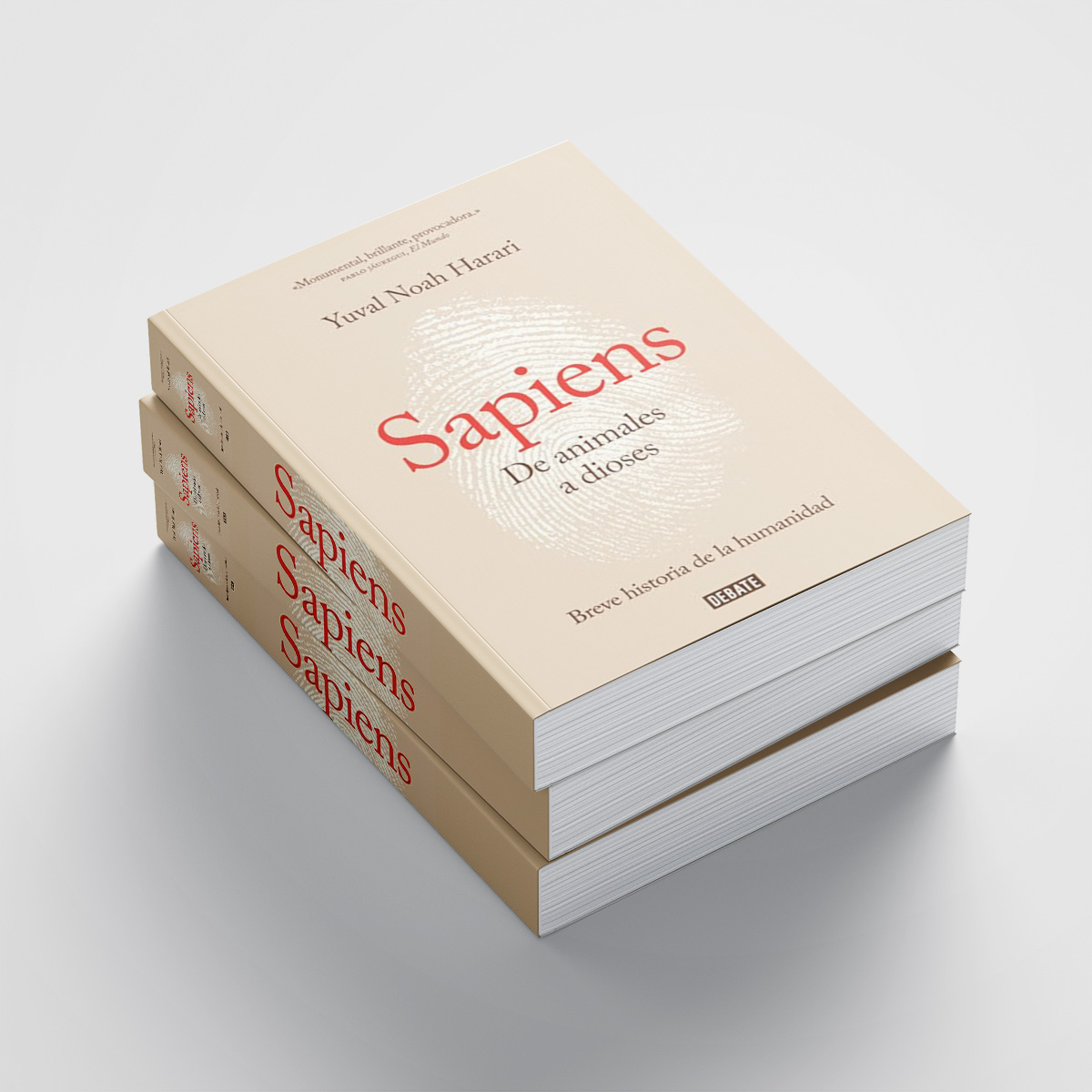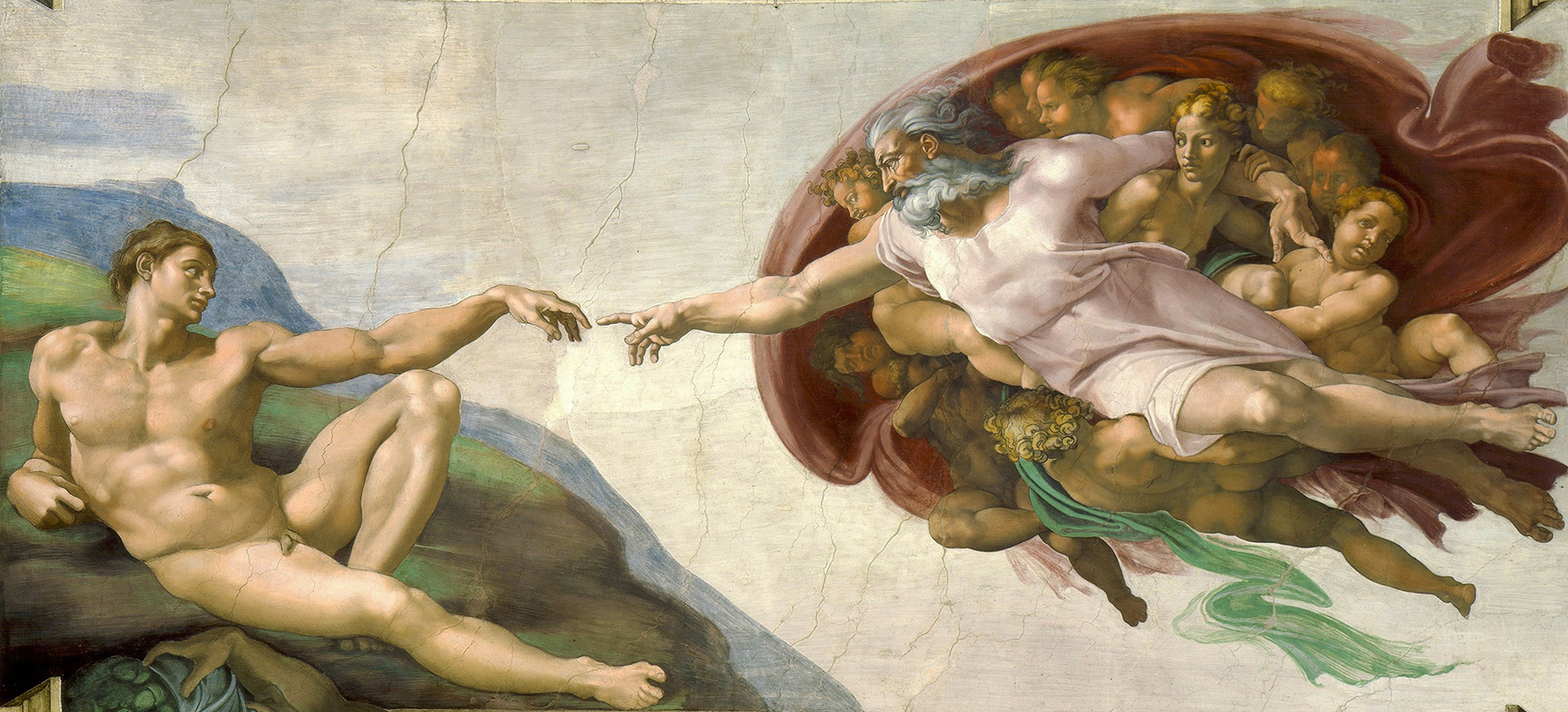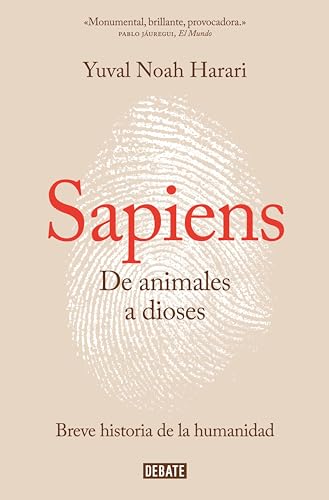
Sapiens: A Brief History of Humankind
Sapiens: A Brief History of Humankind
Essay about the book: Sapiens: A Brief History of Humankind
Sapiens: A Brief History of Humankind
- The agricultural revolution started a process of human control and social hierarchy that continues to evolve to this day, despite its costs to individual quality of life.
Introduction
Amidst the vast history of humanity, there are events that have left an indelible mark on our evolution as a species. One of these transformative moments was the agricultural revolution. Imagine an ancient world where humans relied on hunting and gathering to survive. Life was uncertain, and obtaining food was a constant struggle. But then, something changed. Humanity discovered agriculture, a discovery that would forever alter our destiny.
The agricultural revolution takes us on a fascinating journey through time. It transports us to the early agricultural settlements, where humans began cultivating and domesticating plants and animals. Sedentary living replaced nomadic life, leading to new forms of social and economic organization. Agriculture became the central focus of human life, and our destinies intertwined with the crops and animals we raised.
But why is this agricultural revolution so significant from a literary, cultural, social, and beyond perspective? The answer lies in the profound influence it has had on the shaping of our societies and our relationship with the natural world. Over the centuries, agriculture has driven crucial changes in social organization, technological development, and the construction of collective imaginaries. The agricultural revolution marked the beginning of a process of human control and social hierarchy that is still evolving to this day.
In this essay, we will explore the multiple aspects of this agricultural revolution and how it has shaped our existence. We will examine the effects of dependency on agriculture on our individual quality of life, as well as the social and political dynamics that have developed as a result of this radical change in our way of life. Moreover, we will analyze the long-term consequences of the agricultural revolution and how these continue to influence our contemporary societies.
Through the study of this historical phenomenon, we can better understand the challenges and opportunities arising from our relationship with agriculture. It invites us to reflect on the balance between collective development and individual well-being, and to consider sustainable alternatives that allow us to preserve our natural environment and promote a more equitable quality of life.
The agricultural revolution not only changed our means of subsistence, but it also shaped our history and our future. In this essay, we will explore the complexities and implications of this transcendental event, embarking on an intellectual journey that will help us understand our existence in the context of the agricultural revolution.
The Luxury Trap
The luxury trap is an intriguing phenomenon that emerged as a result of humanity’s gradual adoption of agriculture. Initially, agriculture gave us the opportunity to secure our food supply in a more consistent and predictable manner. However, as we delved into this new lifestyle, we encountered a surprising paradox. The abundance of food that was once a gift from nature became a luxury trap from which we could not escape.
When we were hunter-gatherers, our basic needs were simple, and our desires were modest. We lived in harmony with nature, taking only what was necessary to survive. But with the arrival of agriculture, our relationship with food changed dramatically. We cultivated and harvested more than we needed, leading us into a new era of excess and accumulation. Luxuries became accessible, and human greed drove us to pursue ever more comforts and material pleasures.
This book provides a profound insight into how this luxury trap ensnared us in an endless cycle of dissatisfaction and desire. As we accumulated wealth and material goods, we found ourselves constantly seeking more. Our happiness became fleeting, as we quickly grew accustomed to our luxuries and desired even more. This cycle of instant gratification and constant pursuit of more reflects our current society, where satisfaction is measured in terms of possessions and status.
It’s important to highlight that this luxury trap not only has individual consequences but also impacts our society as a whole. The relentless pursuit of luxuries and the accumulation of wealth have created significant economic and social inequalities. While some enjoy abundance, others struggle to meet their basic needs. This disparity creates tensions and conflicts, jeopardizing social cohesion and equal opportunities.
The luxury trap challenges us to question our priorities and reconsider what truly makes us happy. Is the accumulation of material goods the path to personal fulfillment and lasting happiness? Or should we seek a more balanced lifestyle focused on deeper values? These are fundamental questions that invite us to reflect on our lifestyle and its impact on ourselves and the world around us.
One of the most surprising aspects revealed by this book is that, despite technological advances and increased agricultural production, the luxury trap persists today. Despite having access to an unprecedented variety of foods and comforts, we remain trapped in a cycle of dissatisfaction and constant pursuit of more. This revelation raises questions about our priorities and challenges us to rethink our relationship with consumption and abundance.
Human Domestication
Human domestication is a fascinating phenomenon that reveals how humans ended up being domesticated by the plants and animals we cultivate, rather than the other way around. This book immerses us in this unique perspective, highlighting how wheat, for example, began domesticating Homo sapiens. From dawn to dusk, humans dedicated their time and effort to caring for and cultivating wheat plants. This symbiotic relationship between us and the species we domesticated has shaped and transformed us throughout history.
As we delve into the analysis of this phenomenon, we find an astonishing discovery. Instead of being the dominators of nature, we became its servants. The domestication of plants and animals led us to establish permanent agricultural settlements, abandoning our nomadic lifestyle. We became dependent on cultivated crops and domesticated animals for our survival. This drastic change in our lifestyle had a profound effect on our evolution as a species.
This book provides a detailed look at this process of human domestication and how it has influenced our culture, technology, and way of life. As we dive into this reading, we discover how the domestication of plants and animals allowed us to develop agricultural and technological skills. Agriculture provided us with food surpluses, which, in turn, allowed population growth and the emergence of complex civilizations.
However, we must also consider the implications of this human domestication. As we became dependent on cultivated plants and domesticated animals, our relationship with nature changed. We went from being part of a balanced ecosystem to being its administrators and manipulators. This asymmetric relationship has led to negative environmental consequences, such as deforestation, soil degradation, and biodiversity loss.
An interesting fact derived from this book is that the process of human domestication continues to this day. As we progress into the modern era, we have continued to genetically modify plants and animals to meet our needs and desires. This constant evolution raises ethical and moral questions about our role as “domesticators” and how we should balance our needs with responsible care for nature.
Human domestication is a complex phenomenon that has shaped our history and our relationship with nature. Through an objective analysis of the concepts presented in this book, we can better understand how we have been influenced and transformed by the plants and animals we have domesticated. It challenges us to reflect on our responsibility as stewards of nature and to seek a sustainable balance between our needs and environmental care.
Social Control and Collective Imaginaries
Agriculture led to the development of frameworks of social control through shared collective imaginaries. In this book, we dive into understanding how agriculture not only transformed our subsistence practices but also our social structures and shared beliefs. As we progress through the objective analysis of the concepts presented, we discover how agriculture not only provided us with food but also led to the formation of agricultural communities and the emergence of collective imaginaries that shaped our way of life.
The transition from a nomadic life to a sedentary life, thanks to agriculture, had a profound impact on social organization. As people settled into agricultural communities, new power structures and control emerged. The book provides evidence of how agricultural societies developed social hierarchies, with leaders and rulers overseeing food production and distribution. These leaders became figures of authority, establishing norms and rules that governed life in the community.
Moreover, agriculture also influenced the formation of shared collective imaginaries. As agricultural communities grew and developed, myths, rituals, and beliefs were created around agriculture and the relationship between humans and nature. These collective imaginaries not only provided a framework for understanding the world but also served as tools for social control. Through the creation of myths and rituals, norms and values were established that guided the behavior of community members.
The collective imaginaries created through agriculture still impact our society today. Despite technological advancements and changes in our agricultural practices, many of the myths and rituals associated with agriculture remain present in our lives. For example, the celebration of agricultural festivities or the depiction of agriculture in art and culture are examples of how these collective imaginaries endure over time.
Agriculture not only transformed our subsistence practices but also our social structures and collective beliefs. Through the objective analysis of the concepts presented in the book, we have explored how agriculture led to the development of frameworks of social control through shared collective imaginaries. These collective imaginaries have shaped our way of life and continue to influence our current society. They challenge us to reflect on how our collective beliefs and social structures can influence our individual and collective actions.
A Great Leap or the Path to Ruin?
Agriculture has been the subject of intense debate regarding its impacts on society and the environment. In this fascinating book, we encounter two opposing viewpoints on agriculture: those who view it as a great leap for humanity and those who consider it a path to ruin. However, when evaluating these perspectives, we can discern nuances and complexities that allow us to better understand the impact of agriculture on our history and our present.
On one hand, those who believe that agriculture was a great leap for humanity argue that it enabled the establishment of sedentary communities and the development of civilization. Agriculture provided a more stable and abundant food source, which allowed population growth and the emergence of cities and complex societies. Moreover, agriculture was the starting point for the development of technologies and knowledge in areas such as irrigation, animal domestication, and seed selection, laying the foundation for the scientific and technological advancements we have today.
On the other hand, there are those who argue that agriculture has had negative consequences for humanity and the environment. They point out that the intensive agricultural system has led to deforestation, soil degradation, and biodiversity loss. Additionally, the reliance on monocultures and the intensive use of agrochemicals have caused problems like water pollution and the loss of soil nutrients. The social impact is also highlighted, such as labor exploitation in industrial agriculture and the loss of traditional agricultural knowledge.
However, when evaluating these stances, it’s important to recognize that reality is much more complex. Agriculture has had both positive and negative impacts, and its evaluation must consider different historical and geographical contexts. Additionally, it is crucial to question the very question and broaden the debate to address other relevant aspects, such as sustainable agriculture, family farming, and agroecological alternatives.
The evaluation of these positions on agriculture as a great leap or a path to ruin shows the need to understand the complexity and nuances of this topic. Agriculture is one of the oldest human activities, having shaped our history and our way of life. Its study and evaluation invite us to reflect on our role as human beings and our relationship with nature.

Conclusion
In conclusion, this fascinating book has taken us into a world of reflection and analysis about the relationship between agriculture and humanity. Throughout the essay, we have explored the trap of luxuries that agriculture has given us, questioning the impact it has had on our lives and the planet. We have also reflected on human domestication and how agriculture has shaped our way of life and our relationship with nature. Additionally, we have explored social control and the collective imagination that agriculture has generated, analyzing how it has influenced our perception of the world.
Through this journey, we have immersed ourselves in a sea of concepts, themes, and ideas that have challenged us to think beyond the obvious. We have discovered the complexity and inherent contradictions of agriculture, and how its evaluation requires a multidimensional and critical approach. We have faced the perplexity of understanding the interaction between agriculture and society, as well as the rapid succession of ideas that have taken us from one topic to another.
We can reaffirm that agriculture has been both an advancement and a trap for humanity. While it has brought comforts and luxuries, it has also generated challenges and problems that we must address. It is crucial that, as a society, we reflect on the impact of our actions and seek sustainable and equitable alternatives.
Finally, this book invites us to question our beliefs, to broaden our perspective, and to act consciously. Agriculture is a complex and multifaceted topic that requires our attention and commitment. How can we balance our needs with those of the planet? How can we promote agriculture that is sustainable, fair, and respectful of biodiversity? It is our responsibility to evaluate and question these impacts, seeking solutions that allow us to coexist harmoniously with our environment. Agriculture is more than an economic activity; it is a profound bond between humanity and nature, and we must care for and value it.





0 comments